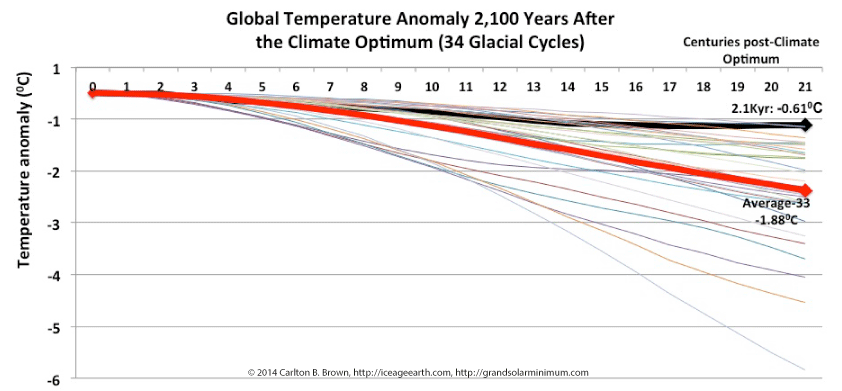The first 2,100 years of temperature data after a climate optimum was extracted for the last 34 glacial cycles, and was rebased to zero degrees and zero time. The temperature declined by 0.610C after the Holocene Climate Optimum, which was 1.260C above the average of all other glacial cycles in 2,026,800 years.[i]
The temperature decline since the Holocene Climate Optimum 2,100 years after the Holocene Climate Optimum (global) is the smallest decline compared with all glacial cycles in the past 2,026,800 years. While this current global ice age inception temperature decline is the biggest outlier (i.e., slowest to cool), it is not a statistically significant outlier.
This data analysis suggests the odds are greater for a change to a global cooling phase than remaining in a warming phase during the 21st century.
Click on this page and download a free copy of my book “Revolution: Ice Age Re-Entry,” and read more about this topic in Chapter 3.
[i] Data: R. Bintanja and R.S.W. van de Wal, “North American ice-sheet dynamics and the onset of 100,000-year glacial cycles.” Nature, Volume 454, 869-872, 14 August 2008. doi:10.1038/nature07158. National Centers for Environmental Information, NESDIS, NOAA, U.S. Department of Commerce. Global 3Ma Temperature, Sea Level, and Ice Volume Reconstructions. https://www.ncdc.noaa.gov/paleo-search/study/11933. Downloaded 10/27/2015.

